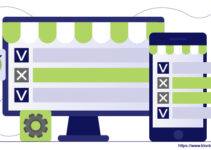HOW TO SETUP A SIMPLE ECOMMERCE STORE IN A WEEK!
Checklist for the new ecommerce business:
Let me guess. You are a bold entrepreneur with a dream to open your first ecommerce store. You have heard of several success stories but you are also aware of the pitfalls of making the wrong choices and burning cash.
We are here to guide you on how to take a calculated risk without spending a fortune. It is possible to launch your store within a few days but wait! That’s the easy part.
You think you have everything ready and are raring to go but here’s a simple checklist to ensure that you are indeed ready to take the big step.
- Regulatory
- Have you consulted a professional who can assist you with regulatory compliances?
- What are you selling? Do you have your inventory or dropshipping account in place?
- If you are interested in a dropshipping ecommerce business
- Are you sure you have tied up with a credible dropshipping company?
- Have you read the reviews, done the due diligence, spoken to other stakeholders and are convinced they are the right partners? After all their products and services will determine how people perceive you as a business.
- Have you decided on the product categories you are planning to target? Have you done enough market research to gauge the pulse of the target audience?
- Have you tested the end to end purchasing process?
- Have you tested the order fulfilment and return process?
- Are you selling worldwide? Do you know the export regulations? Do you know the restrictions? Are you aware of the tax implications?
- Have you prepared the Terms and Conditions and policies to be displayed on your site?
- If you are starting your own branded store, here
is a step-by-step checklist of questions
- Is your inventory ready?
- Is the production process in place?
- Is your supply-chain in place? Can you handle spikes in demand if needed?
- Have you figured out your warehousing/fulfilment process? Who are the players, what rates they are offering, what are the restrictions and so on and so forth?
- Which ecommerce platform should I use?
- Can it handle my business process?
- Can it handle my volumes?
- Can I scale?
- What will be total cost of ownership?
- Now comes the big question – what does the
ecommerce setup entail?
- Inventory listing – Am I ready with my products? Document your SKU, quantity, price, title, description – you could hire an expert if you have the budget or start with the basics set first
- Payment Gateway – Which payment gateway should I opt for? Research the payment gateways compatible with your platform and read reviews, delve into the terms and conditions, understand their offerings and breadth of services and then sign up. It is not easy to keep changing payment gateways so do your due diligence before taking the leap.
- Fulfilment – Nothing affects the purchasing process more than fulfilment. We all know how great if feels when Amazon flashes the prime sticker and delivers our merchandise in less than a day. Maybe you cannot match an Amazon but offering an efficient and trustworthy fulfilment process is imperative to succeed in the competitive ecommerce world.
- Don’t forget to ask the right questions about rates, volumes, tracking, returns, Cash-On-Delivery, reporting mechanism for complaints like damaged goods, insurance and types of goods the fulfilment partner handles.If you are exporting or importing, you need to choose a reliable partner who is conversant with customs regulations and can clear your shipment at the port of entry/exit. READ THE FINE PRINT.
- Returns and Exchanges – Devise your returns strategy keeping the market competition in mind. Should I offer an aggressive returns policy or be conservative? This works if you are not the manufacturer but just a seller or a dropshipper. If you make your products, this could hurt your business. Should I qualify the type of returns? Yes you should. If it is a manufacturing defect or an incorrect item then you need to replace it asap. If it is damaged during transit you will need to discuss it with your logistics partner but the customer needs to get a replacement. If it is a size issue, you could swap it for a similar product. Your team needs to come up with a list of do’s and don’ts and mention it clearly in your Returns policy. For a new ecommerce startup it is important to offer a slightly flexible returns policy to acquire customers.
- Selling jewelry or lingerie or other personal use items? Then it is no returns policy unless you delivered a defective, damaged item or the incorrect item.
- Marketing – can I afford ad budgets or should you invest in a social strategy or hire an expert for digital marketing or go for SEO or hire an in-house person to take care of this? This depends on your budget, in-house expertise and audience. There is no one size fits all for ecommerce marketing. A combined strategy is best but it obviously comes with a higher ticket price. The best solution is to tread slowly and be circumspect in your marketing spend.
- You have done your homework and now it is time to choose the platform and vendors. If you are ready to tread the waters but do not want to burn a hole in your pocket, opt for Shopify . With 600,000 merchants in 160 countries, Shopify is clearly a popular choice. Shopify comes with robust infrastructure, amazing support and a solid ecosystem of third-party solution providers who can address your business requirements. If for some reason, your business process does not fit the Shopify workflow, then you could consider other alternatives like self-hosted platforms (WooCommerce, Magento Community, Prestashop etc..) or a custom ecommerce solution built to match your specifications.



